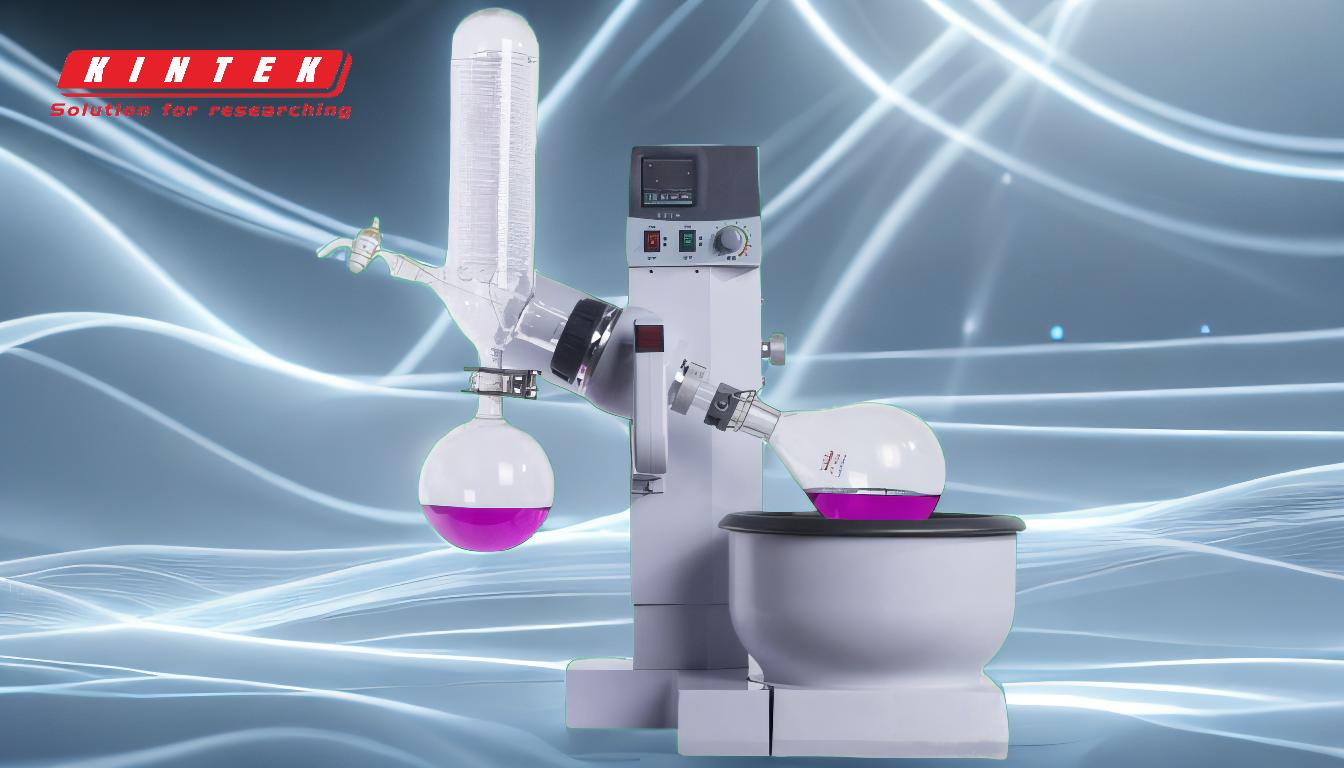For rotary evaporation, the water bath temperature is a critical factor that depends on the solvent being evaporated and the desired efficiency and safety. Generally, water bath temperatures between 25°C and 50°C are sufficient for most common lab solvents. Lower temperatures slow down the process but reduce the risk of bumping, while higher temperatures can speed up distillation but may pose safety risks. The condenser temperature should be set below zero to ensure effective condensation of the solvent vapor. Understanding the solvent's boiling point and using tools like a manometer or distillation nomograph can help optimize the temperature settings for safe and efficient rotary evaporation.
Key Points Explained:

-
Optimal Water Bath Temperature Range:
- The water bath temperature for rotary evaporation typically ranges between 25°C and 50°C for most common lab solvents.
- This range balances efficiency and safety, as lower temperatures reduce the risk of bumping (sudden boiling) but slow down the evaporation process.
- Higher temperatures can speed up distillation but may increase the risk of thermal decomposition or solvent degradation.
-
Importance of Solvent Boiling Point:
- The water bath temperature should not exceed the boiling point of the solvent being evaporated.
- For example, if the solvent has a low boiling point, a lower water bath temperature (e.g., 30-40°C) is sufficient to achieve evaporation without risking overheating.
-
Condenser Temperature:
- The condenser temperature should be set below zero to ensure effective condensation of the solvent vapor.
- This prevents solvent loss and ensures efficient recovery during the process.
-
Safety Considerations:
- Higher temperatures (e.g., 60°C) can pose safety risks, such as increased pressure or solvent decomposition, especially when using silicone oil as the heating medium.
- Lowering the vacuum value is often a safer and more effective way to increase distillation efficiency without raising the temperature excessively.
-
Tools for Optimization:
- A manometer can be used to monitor and adjust the vacuum pressure, ensuring optimal conditions for evaporation.
- A distillation nomograph helps determine the appropriate temperature and pressure settings based on the solvent's properties.
-
Practical Tips:
- Ensure the round-bottom flask is no more than half full to prevent spillage or bumping.
- For large volumes, consider transferring the solution to a larger flask or evaporating in smaller portions.
- Knowing the mass of the clean, empty flask beforehand can help track the progress of the evaporation.
-
Examples of Temperature Settings:
- For ethanol, a water bath temperature of 30-40°C is typically used, with the ethanol vapor temperature maintained at 15-20°C.
- Lower water bath temperatures help prevent thermal decomposition and ensure a smooth evaporation process.
By carefully selecting the water bath temperature based on the solvent's properties and using the right tools and techniques, rotary evaporation can be performed safely and efficiently.
Summary Table:
| Key Factor | Details |
|---|---|
| Water Bath Temperature | 25°C to 50°C for most solvents; balances efficiency and safety. |
| Condenser Temperature | Set below zero for effective vapor condensation. |
| Solvent Boiling Point | Water bath temperature should not exceed the solvent's boiling point. |
| Safety Tips | Avoid high temperatures (>60°C) to prevent solvent decomposition or bumping. |
| Tools for Optimization | Use a manometer and distillation nomograph for precise temperature control. |
| Practical Tips | Keep the flask ≤ half full; monitor flask mass for progress tracking. |
Need help optimizing your rotary evaporation setup? Contact our experts today for personalized advice!











